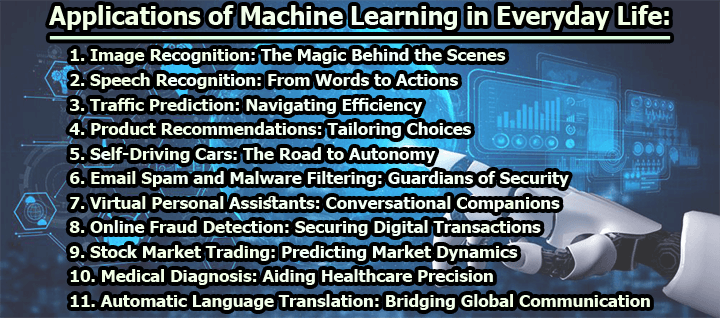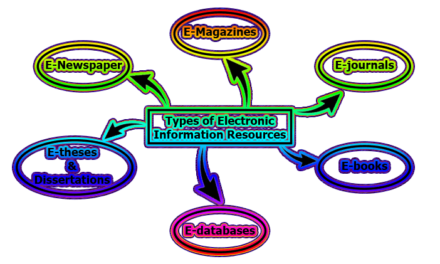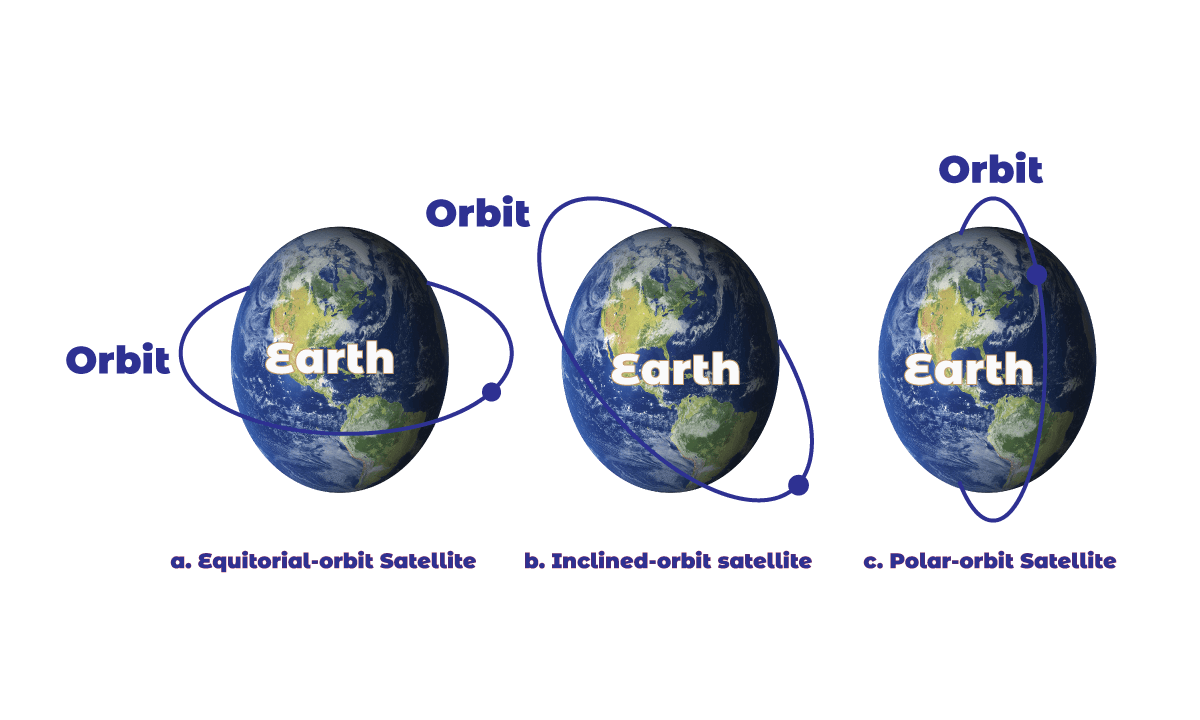Applications of Machine Learning in Everyday Life:
In today’s rapidly advancing technological landscape, the term “machine learning” has become synonymous with innovation and transformation. From automated friend tagging suggestions on social media to self-driving cars, machine learning has seamlessly integrated into our lives, often without us realizing it. This article delves into some of the most notable real-world applications of machine learning in everyday life.
1. Image Recognition: The Magic Behind the Scenes: Image recognition, an indispensable application of machine learning, empowers computers to identify objects, faces, and places within digital images. The seemingly magical “auto friend tagging” feature on social media platforms like Facebook owes its accuracy to sophisticated face detection and recognition algorithms. Deep learning models, such as those behind Facebook’s “Deep Face” project, utilize neural networks to learn the distinct features of faces and match them against known profiles. This amalgamation of machine learning and image recognition simplifies social interactions and amplifies our online experiences.
2. Speech Recognition: From Words to Actions: Speech recognition technology bridges the gap between human communication and digital devices. Popularized by Google’s “Search by voice” and virtual assistants like Siri and Alexa, this application employs machine learning algorithms to transform spoken language into text. Complex neural networks process audio data, deciphering nuances and accents to provide accurate transcriptions. Through this technology, the convenience of interacting with devices via voice commands has redefined user experiences and accessibility.
3. Traffic Prediction: Navigating Efficiency: The era of navigation applications like Google Maps has revolutionized how we navigate the world around us. Machine learning drives the predictive power of these apps, leveraging real-time vehicle data and historical traffic patterns to anticipate road conditions. The technology combines the current locations of vehicles through the Google Maps app and sensors with historical traffic data to generate accurate traffic forecasts. By collecting and analyzing user-contributed information, these applications optimize routes, reducing travel times, and minimizing congestion-induced frustration.
4. Product Recommendations: Tailoring Choices: The captivating world of e-commerce and entertainment has been redefined by machine learning-powered product recommendations. Behemoths like Amazon and Netflix employ intricate algorithms to analyze user preferences and habits, crafting personalized product and content suggestions. By sifting through vast datasets of user behavior, these algorithms predict choices that align with individual tastes. This targeted approach enhances user satisfaction and engagement, illustrating how machine learning reshapes the way we consume digital content.
5. Self-Driving Cars: The Road to Autonomy: The concept of self-driving cars, fueled by machine learning, has captured our imagination. Industry pioneer Tesla employs unsupervised learning techniques to train car models to identify pedestrians, obstacles, and other vehicles. These models learn from extensive datasets containing road scenarios, enabling the vehicles to make informed decisions autonomously. This fusion of AI and automotive engineering holds the potential to revolutionize transportation, enhance safety, and redefine urban mobility.
6. Email Spam and Malware Filtering: Guardians of Security: Machine learning safeguards our digital communication by efficiently filtering out email spam and malicious content. Complex algorithms, such as Multi-Layer Perceptron and Naïve Bayes Classifier, categorize incoming emails as legitimate or spam. These filters scrutinize email content, headers, and sender profiles, effectively isolating potential threats. This layered approach ensures the security of our online communication and protects us from cyber threats.
7. Virtual Personal Assistants: Conversational Companions: Virtual personal assistants like Google Assistant, Siri, and Alexa have transcended basic voice recognition. These assistants employ natural language processing (NLP) algorithms, which dissect and comprehend user commands, enabling them to perform tasks such as setting reminders and answering queries. The fusion of machine learning and NLP technology forms the backbone of these virtual companions, transforming our interaction with technology into more intuitive and seamless experiences.
8. Online Fraud Detection: Securing Digital Transactions: In the realm of online transactions, the battle against fraudulent activities has escalated. Machine learning, particularly feed-forward neural networks, plays a pivotal role in this arena. These networks scrutinize transaction patterns, detecting anomalies that could indicate fraudulent behavior. Through continuous learning, these algorithms adapt to evolving tactics, ensuring the safety of online financial transactions and bolstering user confidence.
9. Stock Market Trading: Predicting Market Dynamics: Machine learning’s infiltration into stock market trading has introduced predictive modeling to investment decisions. Long Short-Term Memory (LSTM) neural networks analyze historical stock data, identifying trends and patterns that guide market forecasts. While stock trading remains inherently volatile, the integration of machine learning equips investors with data-driven insights, enhancing their ability to make informed choices.
10. Medical Diagnosis: Aiding Healthcare Precision: Machine learning’s impact extends to healthcare, revolutionizing medical diagnostics and treatment strategies. By analyzing medical images and patient data, machine-learning algorithms can identify diseases and predict patient outcomes. This technology accelerates diagnostic processes, leading to earlier interventions and improved patient care. In the realm of medical imaging, machine learning contributes to creating 3D models that precisely locate brain lesions and tumors, ultimately advancing our understanding and treatment of complex conditions.
11. Automatic Language Translation: Bridging Global Communication: Language barriers are no longer insurmountable hurdles, thanks to automatic language translation powered by machine learning. Google’s Neural Machine Translation (GNMT) employs sequence-to-sequence learning algorithms to accurately translate text between languages. By analyzing parallel texts in different languages, machine learning models learn patterns and idiomatic nuances, enabling effective cross-language communication.
In conclusion, Machine Learning’s pervasive influence continues to redefine our everyday experiences, from enhancing digital interactions to reshaping critical industries. Delving into applications like image recognition, speech processing, and self-driving cars, we unveil the intricate workings of these transformative technologies. As machine learning evolves, its potential to catalyze innovation and bridge gaps in various domains remains boundless. Embracing these applications propels us toward a future where technology seamlessly augments our lives, fostering interconnectedness, intelligence, and efficiency.

Assistant Teacher at Zinzira Pir Mohammad Pilot School and College










